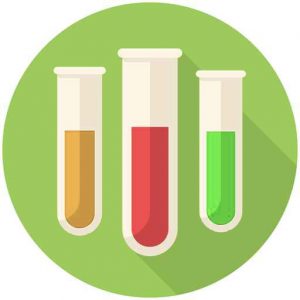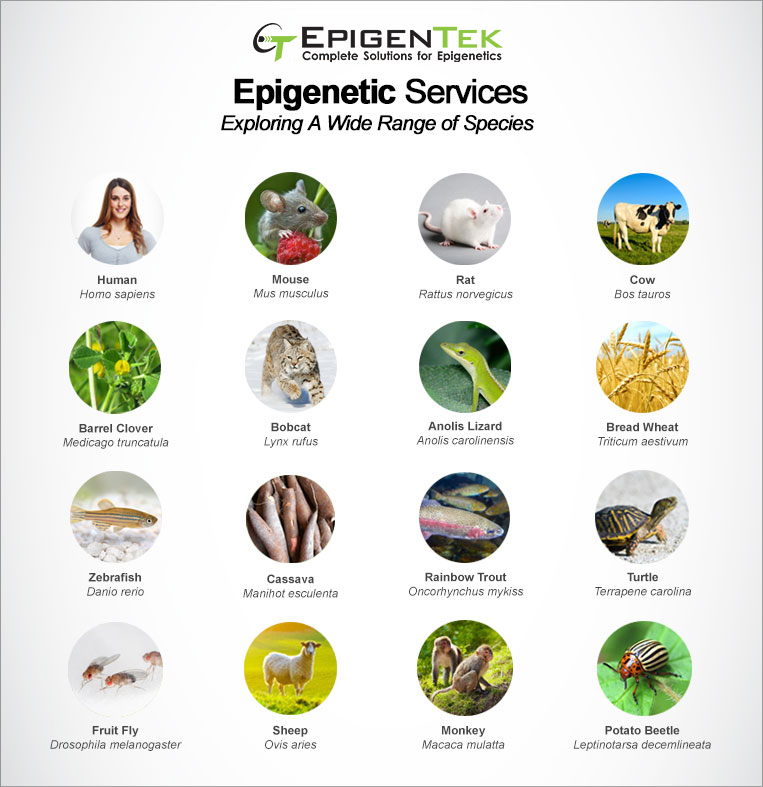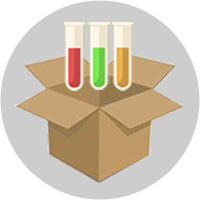We currently accept a wide range of samples. Proper sample preparation along with the appropriate quality control methods on your end will allow the greatest chance for assay success. Please follow the guidelines below for sample requirements, packaging and labeling, and shipping.
DNA, RNA, and chromatin can be isolated using your own successful method. EpiGentek offers a series of genomic DNA isolation kits, RNA isolation kits, histone isolation kits, and chromatin isolation kits for your convenience.
If you have any questions, call us toll-free at 1-877-374-4368 or send an email and an EpiGentek services specialist will be happy to discuss the options available for submitting your samples.
Input Guidelines
General Sample Submission Guidelines
| Application | Minimum Input Quantity (per sample) |
QC Method | ||||
|---|---|---|---|---|---|---|
| DNA | RNA | Chromatin | Cells | Tissue | ||
| Targeted Bisulfite-Seq | 500 ng | N/A | N/A | 0.2-1 M | 5 mg | If it is DNA, UV spectrophotometry, plus gel electrophoresis or Agilent BioAnalyzer |
| Reduced Representation Bisulfite-Seq | 500 ng | N/A | N/A | 0.2-1 M | 5 mg | |
| Whole Genome Bisulfite-Seq | 500 ng | N/A | N/A | 0.2-1 M | 5 mg | |
| ChIP-Seq | 10 ng (ChIPed DNA) |
N/A | 10-20 µg/sample/target | N/A | N/A | If it is DNA, UV spectrophotometry, plus gel electrophoresis or Agilent BioAnalyzer. If it is chromatin, indicate if it is fixed. |
| Methylation Specific PCR (MS-PCR) | 200 ng | N/A | N/A | 0.2-1 M | 5 mg | If it is DNA, UV spectrophotometry, plus gel electrophoresis or Agilent BioAnalyzer |
| Global 5-mC/5-hmC |
250 ng/sample/assay* | N/A | N/A | 0.2-1 M | 5 mg | If it is DNA, UV spectrophotometry, plus gel electrophoresis |
| Global m6A / 5-mC RNA | N/A | 500 ng* (Total RNA) |
N/A | N/A | N/A | UV spectrophotometry |
* For Global Quantification Assays, the sample concentration should be at least 50 ng/µl.
(1) For all applications using DNA, RNA, or chromatin, the sample concentration should be greater than 20 ng/µl.
(2) Samples can be isolated from various tissue or cell samples including flask or microplate cultured cells, microdissection samples.
Histone Sample Submission Guidelines
| Application | Minimum Input Quantity (per sample) |
Sample Buffer | QC Method | |
|---|---|---|---|---|
| Compound | Cells/Tissue or Histone Extracts | |||
| Histone Modification Quantification | N/A | 0.5 M/10 mg or 500 ng extracts/target | Culture medium or extraction buffer | Spectrophotometry |
(1) Cells/tissue samples can be frozen at -80°C with/without treatment of inhibitor or activator. Histone extracts can be isolated from various tissue or cell samples including flask or microplate cultured cells. EpiGentek offers a histone isolation kit (Cat. #OP-0006) for your convenience. See the “Sample Requirements” tab for details.
Sample Requirements
Sample Requirements
Sample Requirements for Genomic DNA
- DNA should be isolated using an appropriate method and treated with RNase to eliminate residual RNA. Refer to the table on the Input Guidelines tab for input requirements.
- DNA should be of high quality without degradation.
- Submit a gel image or Agilent Bioanalyzer trace image.
- Samples with an OD ratio A260/A280 ≥ 1.8 and A260/A230 ≥ 1.9 are required.
- Samples should be stored in TE at 4˚C or -20˚C.
- Samples should be stored and shipped in a tightly capped PCR plate, 0.2 ml tube, 0.5 ml tube, or 1.5 ml tube.
- Samples should be shipped at 4˚C using frozen ice packs for next day delivery.
Sample Requirements for Total RNA
- RNA should be isolated using an appropriate method. Refer to the table on the Input Guidelines tab for input requirements.
- Re-suspend total RNA in RNase-free water. DO NOT use DEPC-treated H2O.
- Quantify total RNA samples using a UV spectrophotometric method or appropriate fluorescence method.
- Submit a gel image or Agilent Bioanalyzer trace image.
- The samples should have an OD260/280 ratio between 1.8 and 2.0, and an OD260/230 ratio greater than 1.7.
- High-quality total RNA samples should show a 28S rRNA band at 4.5 kb and an 18S rRNA band at 1.9 Kb. If Agilent Technologies 2100 Bioanalyzer is used, high-quality total RNA samples should give two distinct peaks.
- Samples should be stored and shipped in a tightly capped PCR plate, 0.2 ml tube, 0.5 ml tube, or 1.5 ml tube.
- Samples should be shipped at -20˚C using sufficient dry ice for next day delivery.
Sample Requirements for Chromatin
- Chromatin should be isolated using an appropriate method. Refer to the table on the Input Guidelines tab for input requirements.
- Immunoprecipitated chromatin (ChIPed DNA) for ChIP-seq should be of sufficient quantity for library preparation. Refer to the table on the Input Guidelines tab for input requirements.
- ChIP DNA should be stored and shipped in a tightly capped PCR plate, 0.2 ml tube, 0.5 ml tube, or 1.5 ml tube.
- ChIPed DNA should be shipped at 4˚C using frozen ice packs for next day delivery.
- Chromatin isolated for chromatin accessibility and nucleosome positioning assays should be:
- High quality
- Non-fragmented (un-sheared)
- Shipped at -20˚C using sufficient dry ice for next day delivery
- Stored and shipped in a tightly capped PCR plate, 0.2 ml tube, 0.5 ml tube, or 1.5 ml tube
Sample Requirements for Cells/Tissue
- Treated/untreated cells/tissues should be stored in liquid Nitrogen or at -80˚C until shipping.
- Cells/tissue should NOT be fixed. Please contact your account representative if samples have already been fixed.
- The amount of cells/tissues should be of sufficient quantity for assay. Refer to the table on the Input Guidelines tab for input requirements.
- Frozen cells/tissues should be stored and shipped in a tightly capped cryotube.
- Cell/tissue samples should be shipped using sufficient dry ice for next day delivery.
Sample Requirements for Histone Extracts
- Histones should be isolated using an appropriate method and isolated histone extracts should be stored at -80˚C until shipping.
- The concentration or amount of histones should be of sufficient quantity for assay. Refer to the table in the Input Guidelines tab for input requirements.
- Frozen histone extracts should be stored and shipped in a tightly capped 0.5 ml tube or 1.5 ml tube.
- Histone samples should be shipped using sufficient dry ice for next day delivery.
Species Tested
From human to bobcat to zebrafish, researchers have explored these species and more with a wide range of our epigenetic services. Get started on your next epigenetic project by submitting a services inquiry or email us for more information on your specific species compatibility.

Packaging
Sample Packaging Guidelines

Sample Labeling Instructions
Do not use a marker pen (even a permanent ink marker) to mark directly on the side of the tube or on the lid. Instead, write the sample information on a slip of paper (or adhesive label) and secure the written label to the tube using transparent tape.
Include a completed copy of the Sample Submission Form (provided to you via e-mail at time of order) with your sample shipment. Make sure that the sample information on the Sample Submission Form matches the labels on the tubes.
Sample Packing Instructions
Samples should be stored and shipped in a tightly capped PCR plate, 0.2 ml tube, 0.5 ml tube, or 1.5 ml tube. Individually seal the outside of each tube with Parafilm to prevent samples from accidentally opening, leaking, or unexpectedly evaporating. All samples should be placed inside of a 50 ml tube or holding rack to prevent damage or loss.
- DNA and ChIPed DNA should be shipped at 4˚C using frozen ice packs for next day delivery.
- RNA and chromatin should be shipped at -20˚C using sufficient dry ice for next day delivery.
- Compounds should be shipped at 4˚C using frozen ice packs for next day delivery.
- Cell/tissue and histone samples should be shipped at -20˚C using sufficient dry ice for next day delivery.
Sample Submission Documents
A Sample Submission Form (provided by e-mail at time of order), a copy of the quote or purchase order, as well as any relevant QC and safety data must accompany each package to be shipped, for each service project.
Shipping
Shipping Instructions
 All samples must be shipped for weekday delivery. No samples should be shipped for weekend or US holiday delivery.
All samples must be shipped for weekday delivery. No samples should be shipped for weekend or US holiday delivery.
- Please follow the sample preparation guidelines, sample packaging instructions, and shipping instructions before shipping your samples.
- Purified DNA and compounds should be shipped at 4˚C using frozen ice packs for next day delivery. RNA, chromatin, cell/tissue, and histone samples should be shipped at -20˚C with sufficient dry ice for next day delivery.
- Services for an order will not begin until all samples and documents for that order have been received. Therefore, all samples should be shipped together.
Domestic (USA) Shipping
- Make sure that all samples are prepared and packaged according to the guidelines given above.
- Select reliable couriers such as FedEx or UPS and use an express next-day shipping option for shipments within the United States.
- Ship samples to the following address:
ATTN: Service Quote #<your provided quote ID>
EpiGentek Group Inc.
110 Bi County Blvd. Ste 122
Farmingdale, NY 11735
USA
Tel: 1-631-755-0888 - Email services @ epigentek.com the tracking information once the package has left your facility, using “Sample Tracking Quote#[your service quote number]” as the subject for the email.
International (non-USA) Shipping
- All samples must be shipped for delivery on Monday through Thursday. No samples should be shipped for weekend delivery.
- Use an express shipment option (the fastest delivery offered) from a reliable courier such as FedEx, UPS, or DHL.
- Complete a commercial invoice and any relevant documentation required by customs through your local international courier. Include the documents in the shipment.
- Please include the following information in the commercial invoice:
- “Non-Infectious, Non-Hazardous RNA or DNA Samples for Research Use Only” or “Non-Infectious, Non-Hazardous Compound, Cell/Tissue or Histone Samples for Research Use Only”
- “No Commercial Value, Value is for Customs Purposes Only”
- Declared value of the shipment for customs [i.e. $1.00 (USD) or €1.00 (EUR)]
- Number of samples and volume amounts
- Harmonized code (tariff code) for classification of products. See the US government’s HTS Online Lookup Tool for your reference. We suggest using HS 3822.00.50.90 for DNA or RNA, HS 3821.00.00 for culture media, HS 3002.90 for serum or plasma, HS 3001.20.00 for urine, CSF, and cell/tissue extracts.
- Remember, a Sample Submission Form (provided by e-mail at time of order), a copy of the quote or purchase order, as well as any relevant QC and safety data must accompany each package to be shipped, for each service project. Securely package DNA samples with sufficient blue ice, and RNA samples and frozen tissues with dry ice. Dry ice weight may need to be declared on the package according to your courier and customs.
- Ship samples to the following address:
- ATTN: Service Quote #<your provided quote ID>
EpiGentek Group Inc.
110 Bi County Blvd. Ste 122
Farmingdale, NY 11735
USA
Tel: 1-631-755-0888
- ATTN: Service Quote #<your provided quote ID>
- Email services @ epigentek.com the tracking information once the package has left your facility, using “Sample Tracking Quote#[your service quote number]” as the subject for the email.
